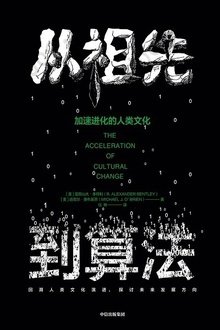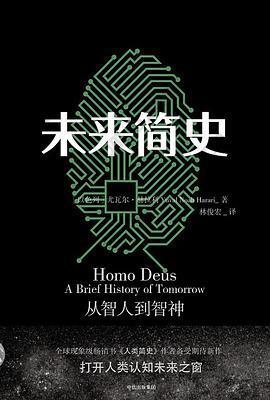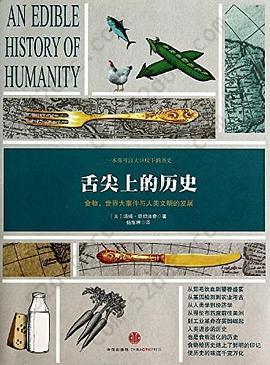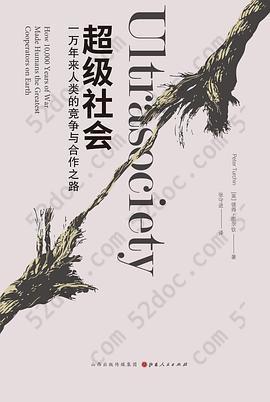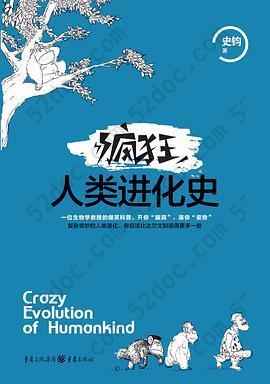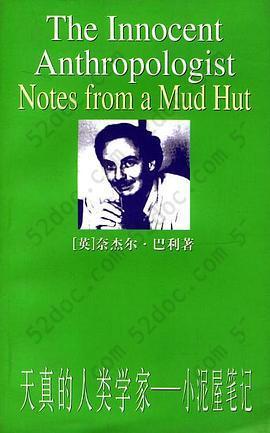注重体验与质量的电子书资源下载网站
分类于: 人工智能 职场办公
简介

The Origins of the World's Mythologies: How the World's Mythologies Were Born 豆 0.0分
资源最后更新于 2020-11-07 12:24:22
作者:E. J. Michael Witzel
出版社:Oxford University Press
出版日期:2013-01
ISBN:9780195367461
文件格式: pdf
标签: 神话学 宗教 文化人类学 人类学 神话 comparativemythology 比较语言学 世界史前史
简介· · · · · ·
This remarkable book is the most ambitious work on mythology since that of the renowned Mircea Eliade, who all but single-handedly invented the modern study of myth and religion. Focusing on the oldest available texts, buttressed by data from archeology, comparative linguistics and human population genetics, Michael Witzel reconstructs a single original African source for our c...
目录
Contents
§1 Introduction
1.1 What is myth, how do we study and compare it?
1.2 Definition; study of myth in the past
1.3 Comparative mythology
1.4 Laurasian mythology: establishing the common origin of the mythologies of Eurasia and the Americas
1.5 Earlier explanations of myth
1.6 Ur-forms, history, and archaeology
1.7 Summary
§ 2 Comparison and Theory
2.1 Theory and practice of comparisons
2.2 Reconstructing Laurasian mythology
2.2.1 Similarities
2.2.2 Regular correspondences and establishment of a unified narrative scheme
2.2.3 Oldest texts to be used
2.2.4 Geographically dispersed items
2.2.5 Reconstruction of the Laurasian common story line and individual myths
2.3 Enhancing the reconstruction: local, regional, macro-regional, and subcontinental variations
2.4 Reconstructing the Laurasian mythological system and inherent problems
2.5 Structure and content in some macro-areas of Laurasian myth.
2.5.1 Macro-areas
2.5.2 The Four ages in the Eurasian and Meso-American macro-areas
2.5.3 Later centers of innovations
2.5.4 Late borrowings (diffusion)
2.6 Some objections to the approach of historical comparative mythology
2.7 Conclusion
§ 3 Creation Myths: The Laurasian Story Line, Our First Novel
3.1 Primordial Creation
1. Chaos and darkness 2. Water 3. Earth diver and floating earth 4. Giant 5. Bull 6. Egg 7. Combined versions
3.2 Father Heaven, Mother Earth
3.3 Separation of heaven and earth, the prop
3.4. Creation of land
3.5 The demiurge or trickster
3.5.1 Creation of light
3.5.2. The slaying of the dragon
3.5.3 The theft of fire and of the heavenly drink
3.6 Generations, Four Ages and five suns
3.7 The creation of humans
3.8 Descent of 'noble' lineages
3.9 The flood
3.10 Heroes
3.11 The final destruction
3.12 Summary
§ 4 The Contributions of Other Sciences: comparison of language, physical anthropology, genetics, archaeology
4.1. Linguistics
4.2 Physical anthropology
4.3. Genetics
4.3.1 Recent advances in human population genetics
4.3.2 Overview of recent developments
4.3.3 Out of Africa
4.3.4 Movement northward after the last two Ice Ages
4.3.5 Genetics, language and mythology
4.3.6 Summary and outlook
4.4. Archaeology
4.4.1 Cave paintings and plastic art
4.4.2 Sacrifice in Late Palaeolithic art
4.4.3 Food production
4.4.4 Domestic animals and pastoralism
4.5 Other items of comparison: children's songs and games; ancient music and regional styles; use of colors; gestures and their regional variations.
4.6. Conclusions resulting from the comparison of the sciences involved
§ 5 The Countercheck: Australia, Melanesia, sub-Saharan Africa
5.1 Possible ways to countercheck
5.1.1 Method
5.1.2 Criteria for testing the theory
5.1.3 Diffusion vs genetic relationship
5.1.4 Later additions
5.2 Beyond Laurasia: Gondwana mythology
5.3. Gondwana mythologies
5.3.1 Sub-Saharan Africa, the Andamans, New Guinea, Australia and Tasmania -- an overview
5.3.2 Australia
5.3.2.1 Tasmania
5.3.3. Melanesia
5.3.3.1 Negritos and other southern remnant populations
5.3.4 Andaman Islands
5.3.5 Africa
5.3.5.1 Remnant populations: San and Pygmies
5.3.5.2 Sub-Saharan Africa
5.3.5.3 Northern influences: the western North-South highway
5.3.5.4 The eastern North-South Highway
5.3.6 Summary
5.4. Individual Gondwana myth types and their common characteristics
5.5 Secondary influences on Gondwana mythology
5.6. Conflicting myths in Gondwanaland
5.6.1 Gondwana element in Laurasian myth
5.6.2 Laurasian elements in Gondwana myth
5.7 Countercheck of Laurasian mythology based on Gondwana mythology
5.7.1 Essential features of Gondwana and Laurasian mythology
5.7.2 The flood myth in world wide perspective
§ 6 First Tales: Pan-Gaean Mythology
6.1 Beyond Laurasia and Gondwana: common myths
6.2 Our first tales
§ 7 Laurasian Mythology in Historical Development
7.1 Late Palaeolithic religion
7.1.1 Late Palaeolithic shamanism
7.1.2 Sacrifice
7.2. Changes from Palaeolithic to state societies
7.3. Dating Gondwana and Laurasian mythology
§ 8 Outlook
8.1 The meaning of Laurasian Mythology
8.2 Beyond Laurasia, Gondwana and Pan-Gaia
8.2.1 Persistence of myth
8.2.2 Some reasons
8.3 Epilogue
§1 Introduction
1.1 What is myth, how do we study and compare it?
1.2 Definition; study of myth in the past
1.3 Comparative mythology
1.4 Laurasian mythology: establishing the common origin of the mythologies of Eurasia and the Americas
1.5 Earlier explanations of myth
1.6 Ur-forms, history, and archaeology
1.7 Summary
§ 2 Comparison and Theory
2.1 Theory and practice of comparisons
2.2 Reconstructing Laurasian mythology
2.2.1 Similarities
2.2.2 Regular correspondences and establishment of a unified narrative scheme
2.2.3 Oldest texts to be used
2.2.4 Geographically dispersed items
2.2.5 Reconstruction of the Laurasian common story line and individual myths
2.3 Enhancing the reconstruction: local, regional, macro-regional, and subcontinental variations
2.4 Reconstructing the Laurasian mythological system and inherent problems
2.5 Structure and content in some macro-areas of Laurasian myth.
2.5.1 Macro-areas
2.5.2 The Four ages in the Eurasian and Meso-American macro-areas
2.5.3 Later centers of innovations
2.5.4 Late borrowings (diffusion)
2.6 Some objections to the approach of historical comparative mythology
2.7 Conclusion
§ 3 Creation Myths: The Laurasian Story Line, Our First Novel
3.1 Primordial Creation
1. Chaos and darkness 2. Water 3. Earth diver and floating earth 4. Giant 5. Bull 6. Egg 7. Combined versions
3.2 Father Heaven, Mother Earth
3.3 Separation of heaven and earth, the prop
3.4. Creation of land
3.5 The demiurge or trickster
3.5.1 Creation of light
3.5.2. The slaying of the dragon
3.5.3 The theft of fire and of the heavenly drink
3.6 Generations, Four Ages and five suns
3.7 The creation of humans
3.8 Descent of 'noble' lineages
3.9 The flood
3.10 Heroes
3.11 The final destruction
3.12 Summary
§ 4 The Contributions of Other Sciences: comparison of language, physical anthropology, genetics, archaeology
4.1. Linguistics
4.2 Physical anthropology
4.3. Genetics
4.3.1 Recent advances in human population genetics
4.3.2 Overview of recent developments
4.3.3 Out of Africa
4.3.4 Movement northward after the last two Ice Ages
4.3.5 Genetics, language and mythology
4.3.6 Summary and outlook
4.4. Archaeology
4.4.1 Cave paintings and plastic art
4.4.2 Sacrifice in Late Palaeolithic art
4.4.3 Food production
4.4.4 Domestic animals and pastoralism
4.5 Other items of comparison: children's songs and games; ancient music and regional styles; use of colors; gestures and their regional variations.
4.6. Conclusions resulting from the comparison of the sciences involved
§ 5 The Countercheck: Australia, Melanesia, sub-Saharan Africa
5.1 Possible ways to countercheck
5.1.1 Method
5.1.2 Criteria for testing the theory
5.1.3 Diffusion vs genetic relationship
5.1.4 Later additions
5.2 Beyond Laurasia: Gondwana mythology
5.3. Gondwana mythologies
5.3.1 Sub-Saharan Africa, the Andamans, New Guinea, Australia and Tasmania -- an overview
5.3.2 Australia
5.3.2.1 Tasmania
5.3.3. Melanesia
5.3.3.1 Negritos and other southern remnant populations
5.3.4 Andaman Islands
5.3.5 Africa
5.3.5.1 Remnant populations: San and Pygmies
5.3.5.2 Sub-Saharan Africa
5.3.5.3 Northern influences: the western North-South highway
5.3.5.4 The eastern North-South Highway
5.3.6 Summary
5.4. Individual Gondwana myth types and their common characteristics
5.5 Secondary influences on Gondwana mythology
5.6. Conflicting myths in Gondwanaland
5.6.1 Gondwana element in Laurasian myth
5.6.2 Laurasian elements in Gondwana myth
5.7 Countercheck of Laurasian mythology based on Gondwana mythology
5.7.1 Essential features of Gondwana and Laurasian mythology
5.7.2 The flood myth in world wide perspective
§ 6 First Tales: Pan-Gaean Mythology
6.1 Beyond Laurasia and Gondwana: common myths
6.2 Our first tales
§ 7 Laurasian Mythology in Historical Development
7.1 Late Palaeolithic religion
7.1.1 Late Palaeolithic shamanism
7.1.2 Sacrifice
7.2. Changes from Palaeolithic to state societies
7.3. Dating Gondwana and Laurasian mythology
§ 8 Outlook
8.1 The meaning of Laurasian Mythology
8.2 Beyond Laurasia, Gondwana and Pan-Gaia
8.2.1 Persistence of myth
8.2.2 Some reasons
8.3 Epilogue



